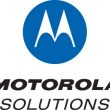Why isn’t P25 right for utilities?
I’ve written about the wireless telecom industry for more than 13 years now, both on the commercial and public-safety/industrial side. What I find refreshing about the latter community is its straight-shooter mentality. While commercial operators and vendors are usually shrouded in marketing speak and spin, those public-safety and industrial users are willing to tell it like it is.
I suppose that’s why I like Jill Lyon, vice president and general counsel of the Utilities Telecom Council (UTC). I recently interviewed her about the UTC’s interest in the European TETRA trunked radio technology. The UTC and the American Petroleum Institute (API) have asked the TETRA Association about its potential use in their industries. However, TETRA is barred from North America because key patent holders—namely Motorola—won’t license it here.
“We keep looking to TETRA, but we can’t have it. And being Americans, that ticks us off,” she said.
She and others in the industrial market say Project 25 just isn’t suitable for their industries, and the other proprietary technology choices aren’t either. These technologies are too expensive since handsets are in the several thousand-dollar range. Moreover, P25 is—or has the perception of being—exclusively focused on public safety. I wonder why that has to be the case.
I realize the P25 standard originally was developed for public safety, while TETRA cast a wider net and targeted both public safety and other trunked radio opportunities, but can’t the industry find a way to create a scaled down version of P25 to target the industrial market? Wouldn’t that help the economies of scale that don’t seem to be budging?
And couldn’t public-safety and utilities work hand-in-hand to have some collective buying power and shared network rollouts? Again, Lyon tells it like she sees it: Public-safety has shown no interest in working with the utility industry on P25.
“They have been exclusionary. Talks about interoperability never include us,” she said. “You might find utilities participating in a shared system on the local level, especially if it’s a municipal utility, but on the national level, we don’t see that encouraged.”
To be fair, some interoperability is supposed to be an important element of the proposed nationwide public/private shared network in the 700 MHz band. The Public Safety Spectrum Trust (PSST)—the nationwide licensee to the 10 MHz swath of public-safety broadband spectrum in the band that would be paired with 10 MHz of commercial 700 MHz spectrum (the D Block) to form the spectral backbone for this network—has worked to ensure that there is some room for so-called critical infrastructure, in order to allow for interoperable communications between public safety and utilities. But that doesn’t solve the immediate need.
What do you think? Tell us in the comment box below.
















